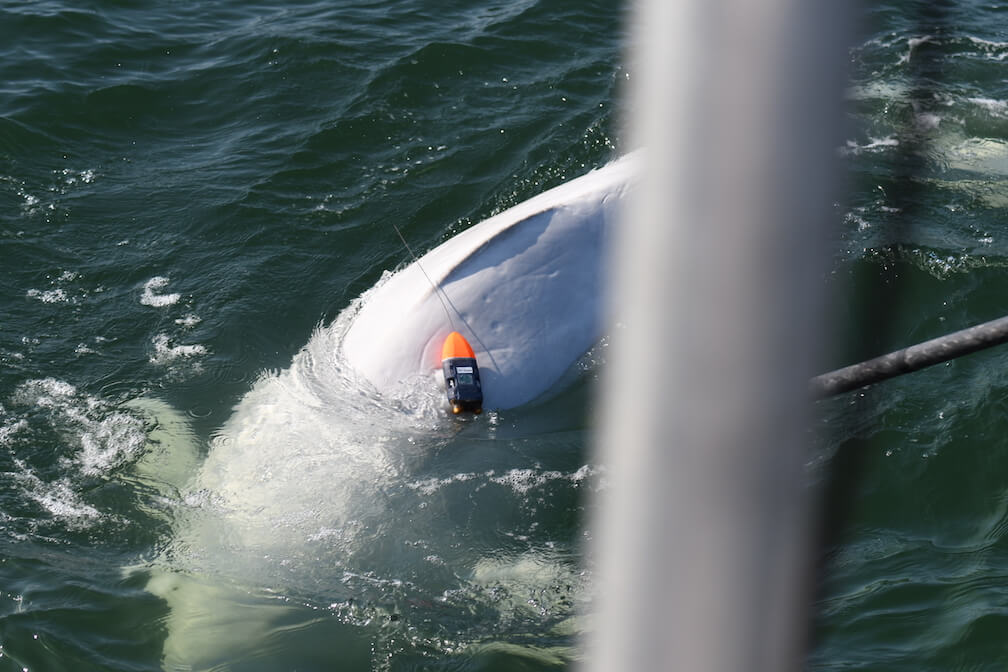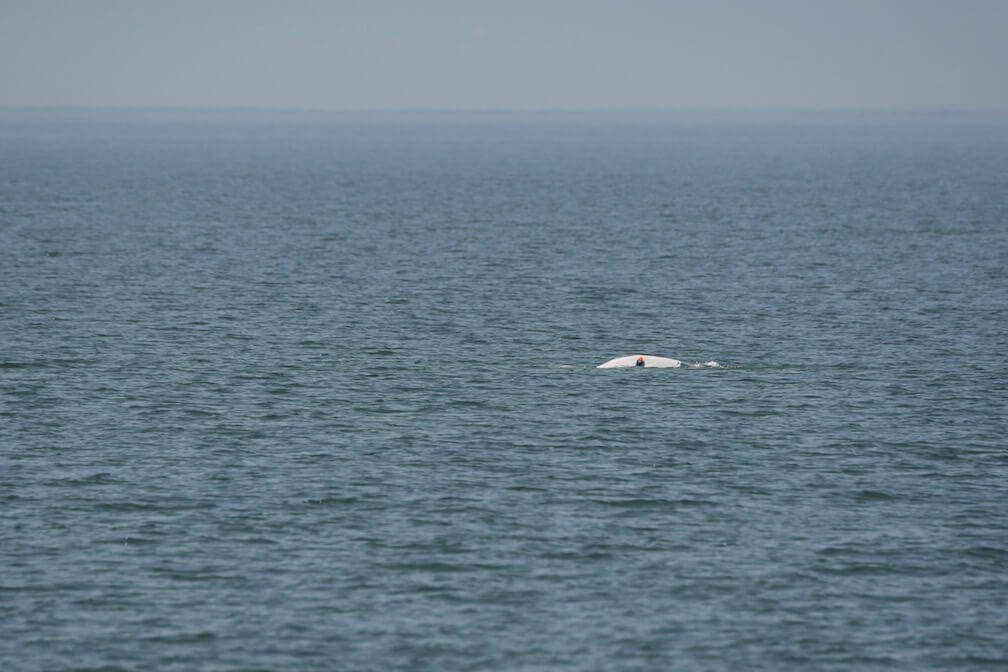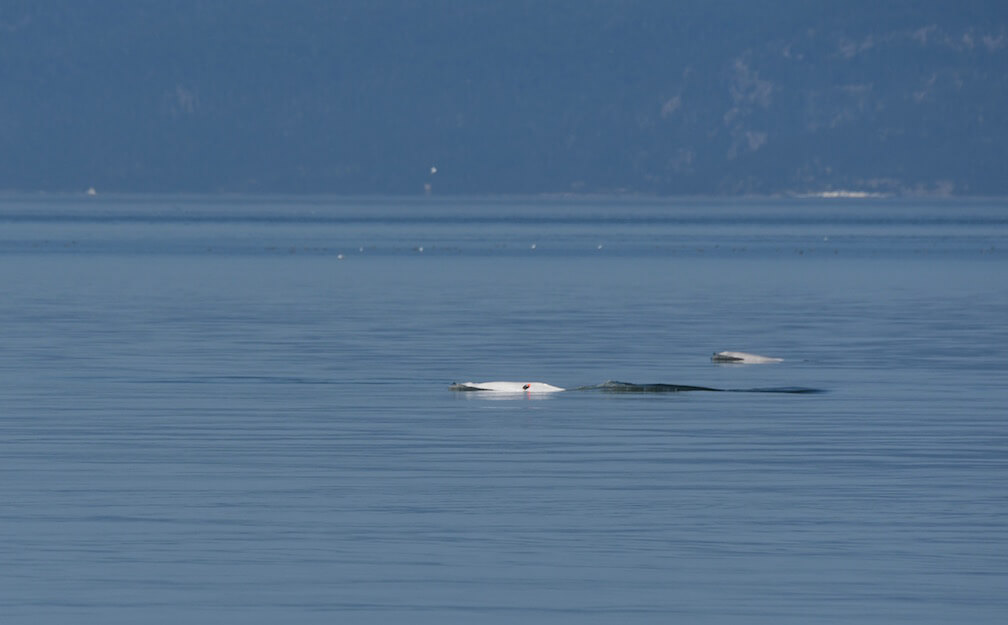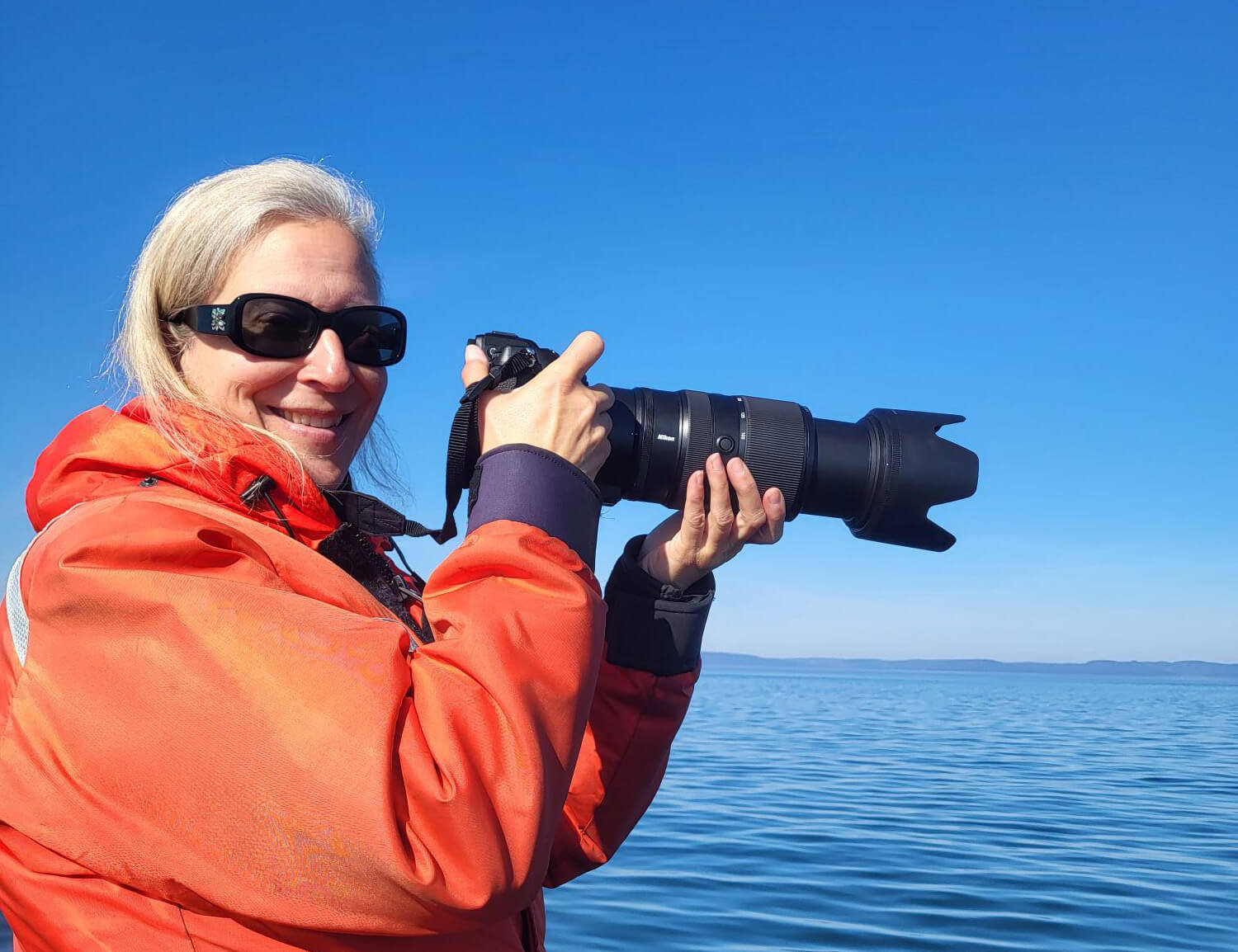On the morning of July 26, the Bleuvet sets sail from the port of Tadoussac to study belugas. With 6 people on board, the cabin is a bit crowded. Researcher Valeria Vergara of Ocean Wise (British Columbia) travelled across the continent with research assistant Marie-Ana Mikus to study communication in St. Lawrence belugas. Véronique Lesage of Fisheries and Oceans Canada is also on board to study the impact of navigation noise on belugas. Lastly, captain Michel Moisan as well as Sophie Bédard and Noémie Roy from the Group for Research and Education on Marine Mammals (GREMM) round out the group.
Three research projects are running in parallel today. Valeria Vergara is testing the hypothesis that each beluga has a unique acoustic signature. If confirmed, each individual could be recognized by its contact call or its “name”. To test her theory, the researcher records the calls of St. Lawrence belugas and then analyzes them. In parallel, Véronique Lesage tries to better understand the effects of navigation noise on belugas’ diving, communication and feeding behaviour. Additionally, whenever she has the chance, Sophie Bédard photograph belugas to contribute to GREMM’s photo-identification project.
The mission for the day is to tag a beluga. As long as the tag remains attached to the animal, it will record a host of information on the beluga’s diving behaviour, the sounds it emits as well as the noises present in its environment. These underwater data will be added to those collected at the surface by researchers throughout the day.
Out toward Île Rouge, we find a herd of belugas to study. Because we hold a research permit, we are authorized to approach them. At about 9:10 am, a beluga swims toward us. It passes under the boat a few times, then swims away. Standing on the deck, Michel Moisan stretches out a long pole in an attempt to place the tag on the beluga’s back. A few minutes later, the beluga approaches again. Score! The tag is in place.
Now the observation phase begins. The boat moves away until it is at least 400 m from the beluga and everyone gets to work. Michel Moisan takes the helm as data collection gets underway for both research projects.
At the bow, Valeria Vergara and Marie-Ana Mikus observe the beluga’s movements relative to the rest of its group. Whenever the individual is alone, the researchers note the time. When they listen to the sounds recorded by the tag, they will know that if a contact call was heard at any of the recorded times, it was probably made by the tagged individual.
At the stern, Véronique Lesage observes the beluga’s dynamism as well as its surface behaviour. Additionally, among other things, she notes the presence of boats in the area, their type, and their direction and distance with respect to the beluga and the rest of its group.
Meanwhile, posted on the roof, Sophie Bédard carries out detailed surveys of the herd. Belugas are often seen in large herds that are split into smaller sub-groups. Every half hour, Sophie notes whether any new individuals have joined or left the herd, the radius of the herd and the direction of its movements. These data will make it possible to compare the behaviour of the tagged beluga with that of the herd in general.
The tag is equipped with a transmitter and our boat, an antenna and a receiver. Whenever the antenna is pointed in any given direction, the frequency and intensity of the beeps indicate whether or not the tag is in that direction.
At 11:45, the sound signals become increasingly sporadic. Perhaps the tag fell off? A tag positioned lower down on a beluga’s back will emit weaker and less frequent signals due to the fact that when the beluga surfaces, the antenna rises less out of the water and emerges for a shorter duration.
A few minutes later, we spot our beluga swimming with three or four other individuals. The tag has indeed slipped. Did the beluga graze the sea floor or did another beluga brush up against the tag? In any case, it is still holding.
At 12:36, the acoustic signal becomes very frequent. “Beep, beep, beep, beep, beep! The tag has fallen off. We find it floating on the water surface and recover the valuable data it contains.
The work day is over and forecasts for strong winds encourage us to quickly return to port. Nevertheless, on our way back, we make a few exciting observations. A minke whale is feeding a few hundred metres from the boat. Then, a group of razorbills and a flock of cormorants fly over our heads. Lastly, a gannet is seen hovering near the Prince Shoal lighthouse.
Recently identified belugas
Amalena, adopted by Tadoussac Elderhostel
Delphi, entrusted to Quebec’s prime minister
Hector, adopted by the Cowboys Fringants and their fans
John A. Macdonald, adopted by The Fairmont Hotel Macdonald
Marjo, adopted by La grande séduction : 10e Congrès médical sur la médecine d’urgence en région du CSSS de la Haute-Côte-Nord-Manicouagan
Pacalou, adopted by Pascale Cauchi
Pascolio, adopted by Tadoussac business owners
Polynix, collective adoption
Pure Laine, adopted by Cynthia Fish
Yogi, adopted by Bell Canada








